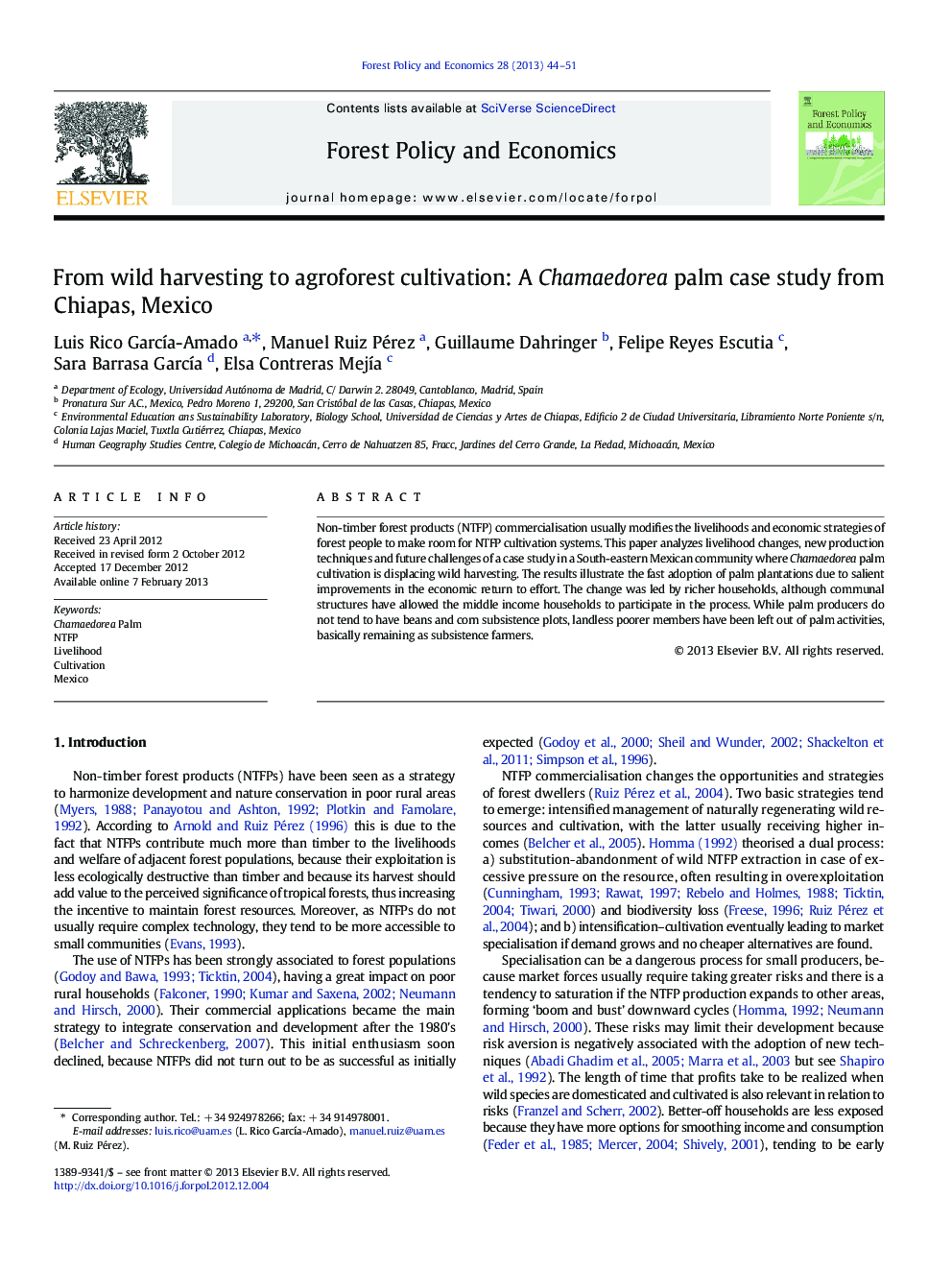| Article ID | Journal | Published Year | Pages | File Type |
|---|---|---|---|---|
| 92021 | Forest Policy and Economics | 2013 | 8 Pages |
Non-timber forest products (NTFP) commercialisation usually modifies the livelihoods and economic strategies of forest people to make room for NTFP cultivation systems. This paper analyzes livelihood changes, new production techniques and future challenges of a case study in a South-eastern Mexican community where Chamaedorea palm cultivation is displacing wild harvesting. The results illustrate the fast adoption of palm plantations due to salient improvements in the economic return to effort. The change was led by richer households, although communal structures have allowed the middle income households to participate in the process. While palm producers do not tend to have beans and corn subsistence plots, landless poorer members have been left out of palm activities, basically remaining as subsistence farmers.
► We analyze livelihood changes derived from NTFP cultivation in a communal forest. ► Palm plantations have been adopted due to salient improvements in return to effort. ► They were started by richer farmers, leading to an initial elite's capture of palm. ► Communal structures have allowed middle-income farmers' inclusion in palm revenues. ► Landless poorer members have been left out of palm activities.
